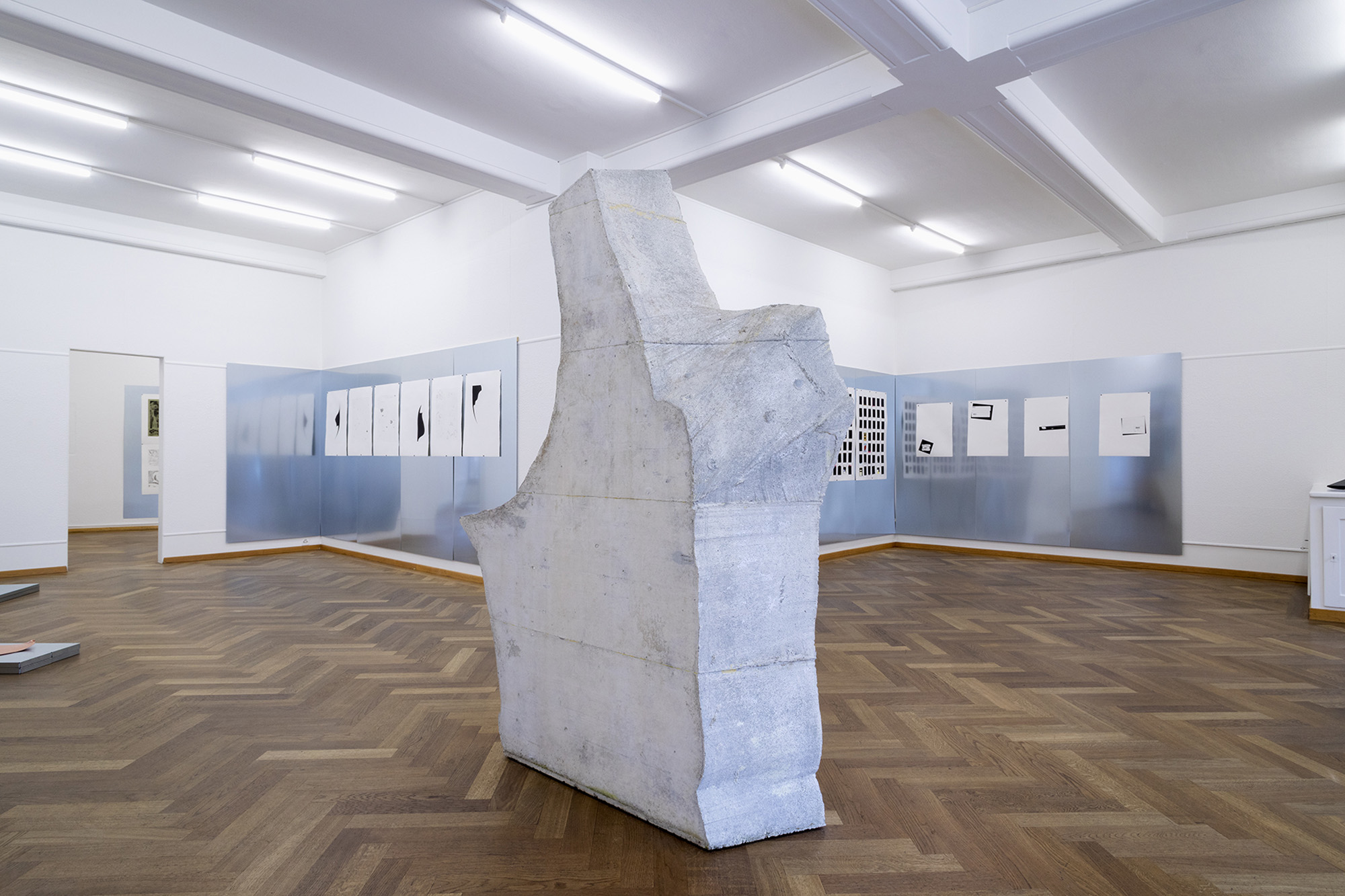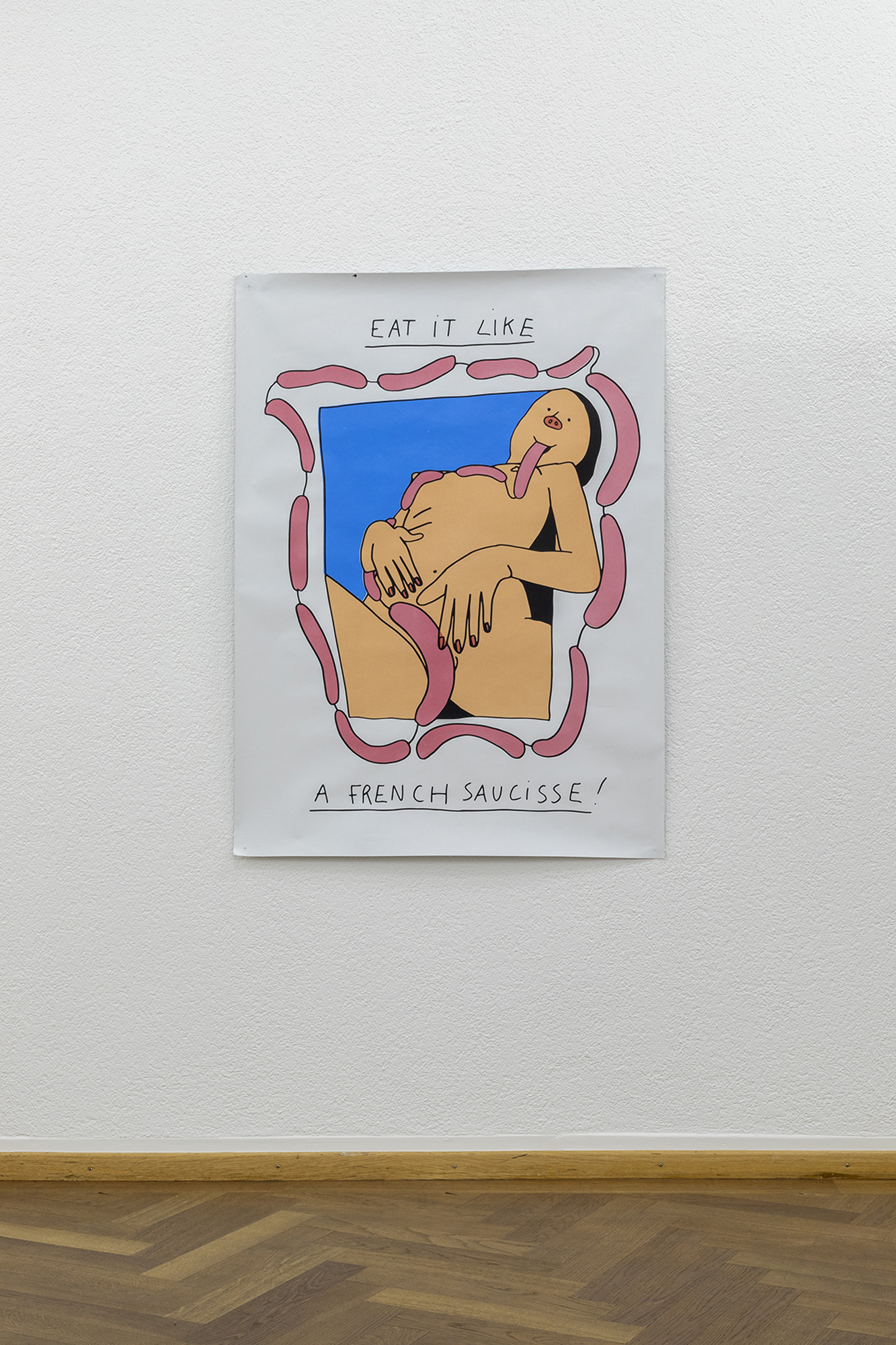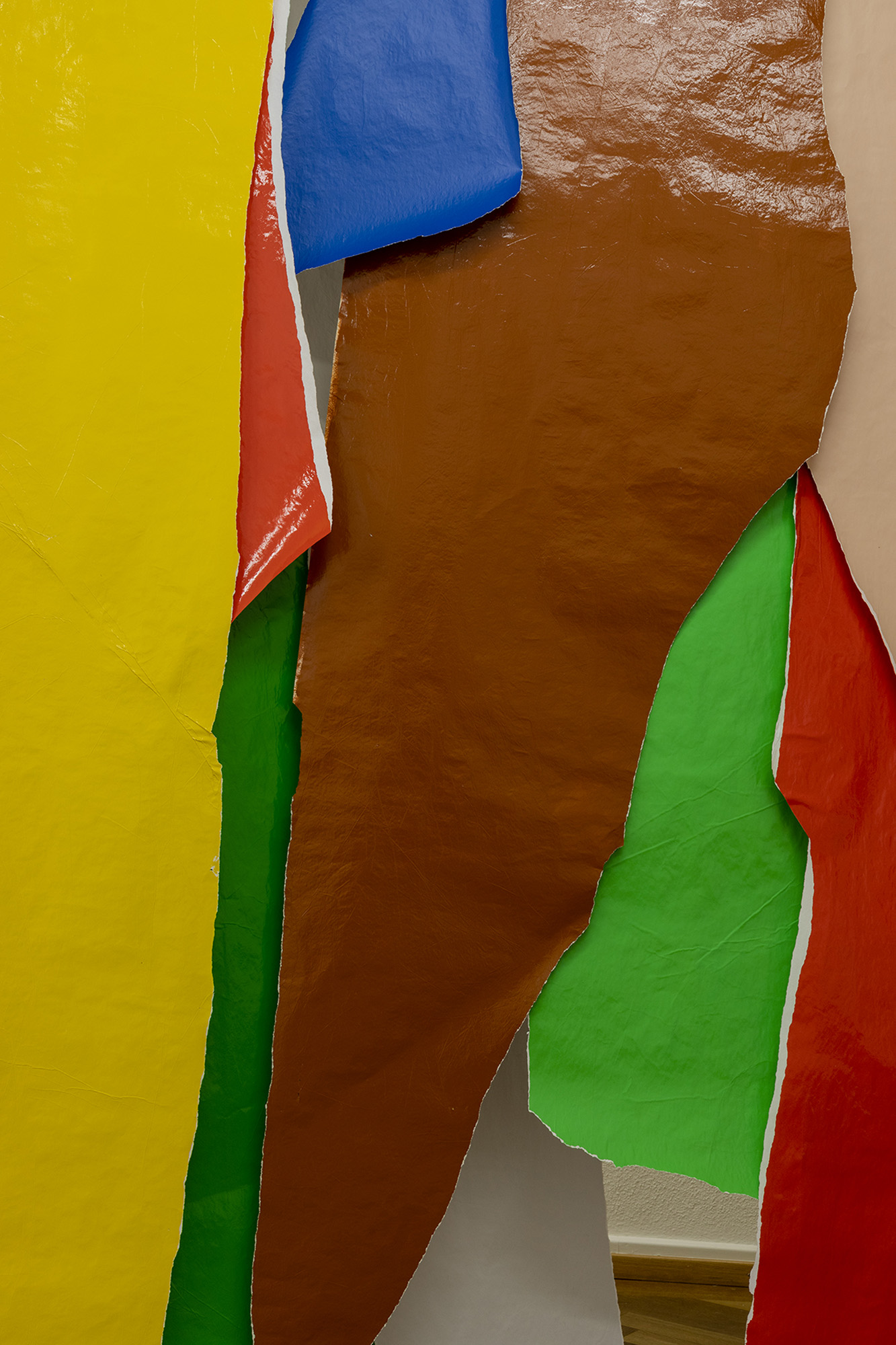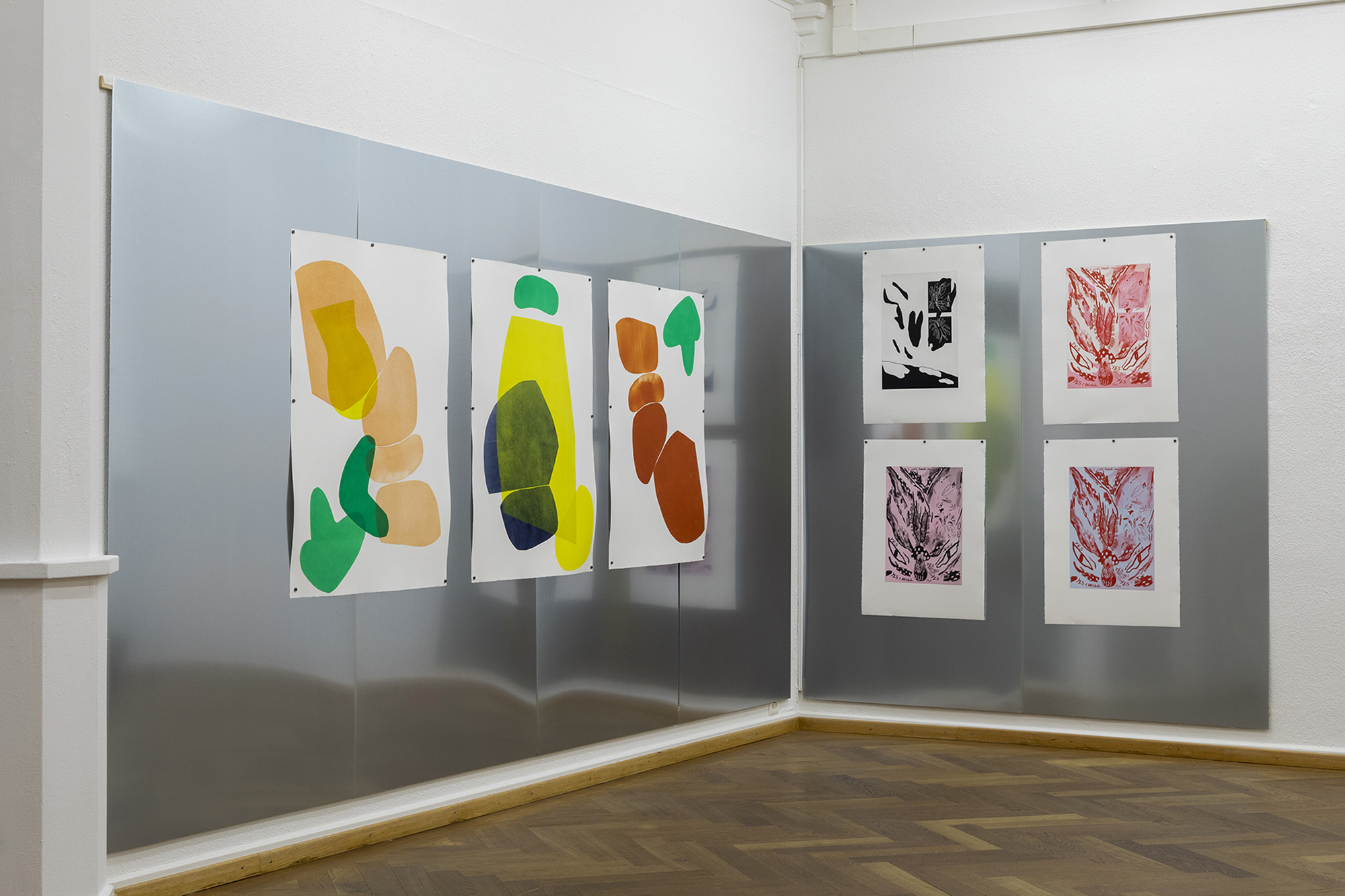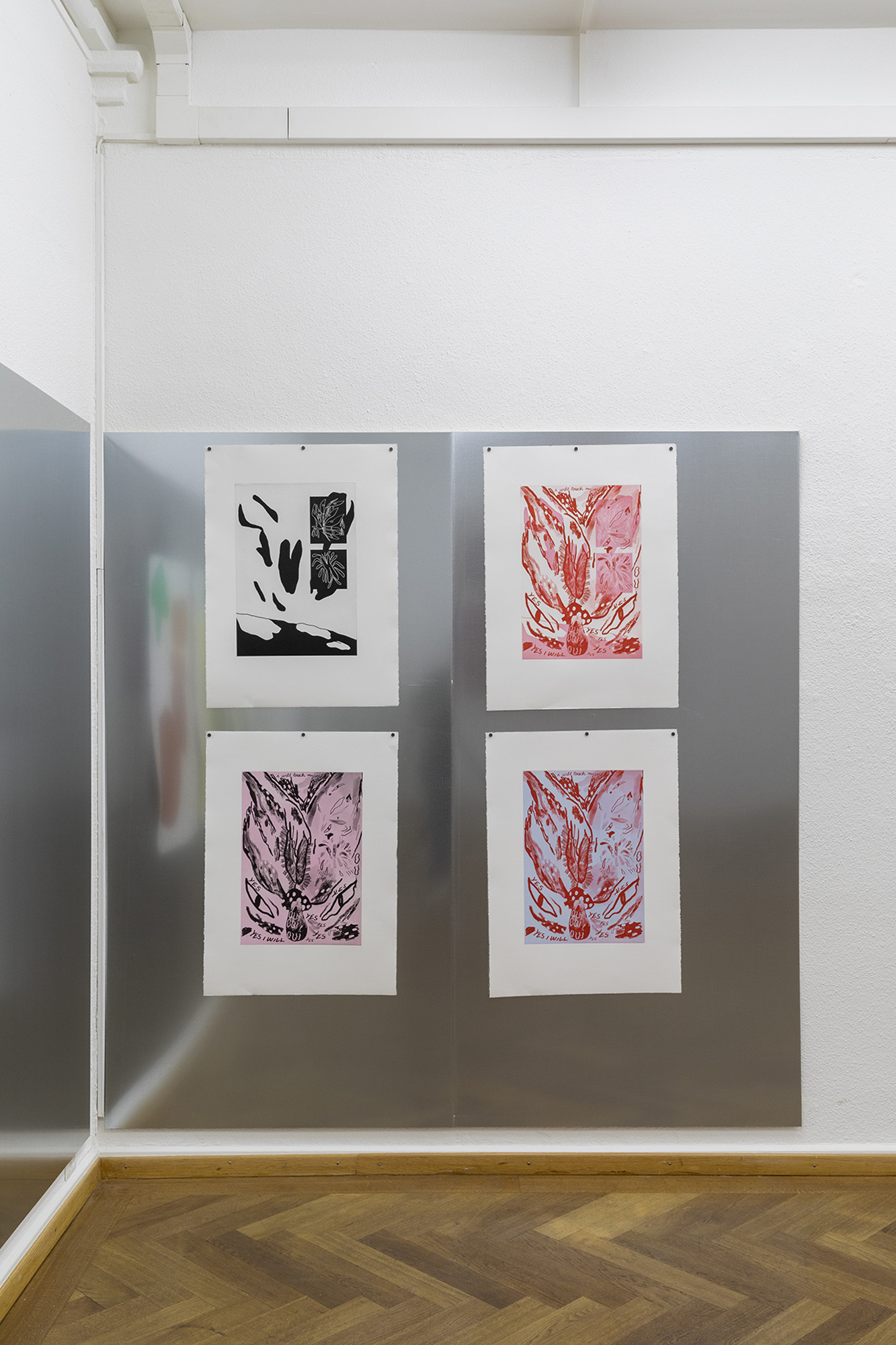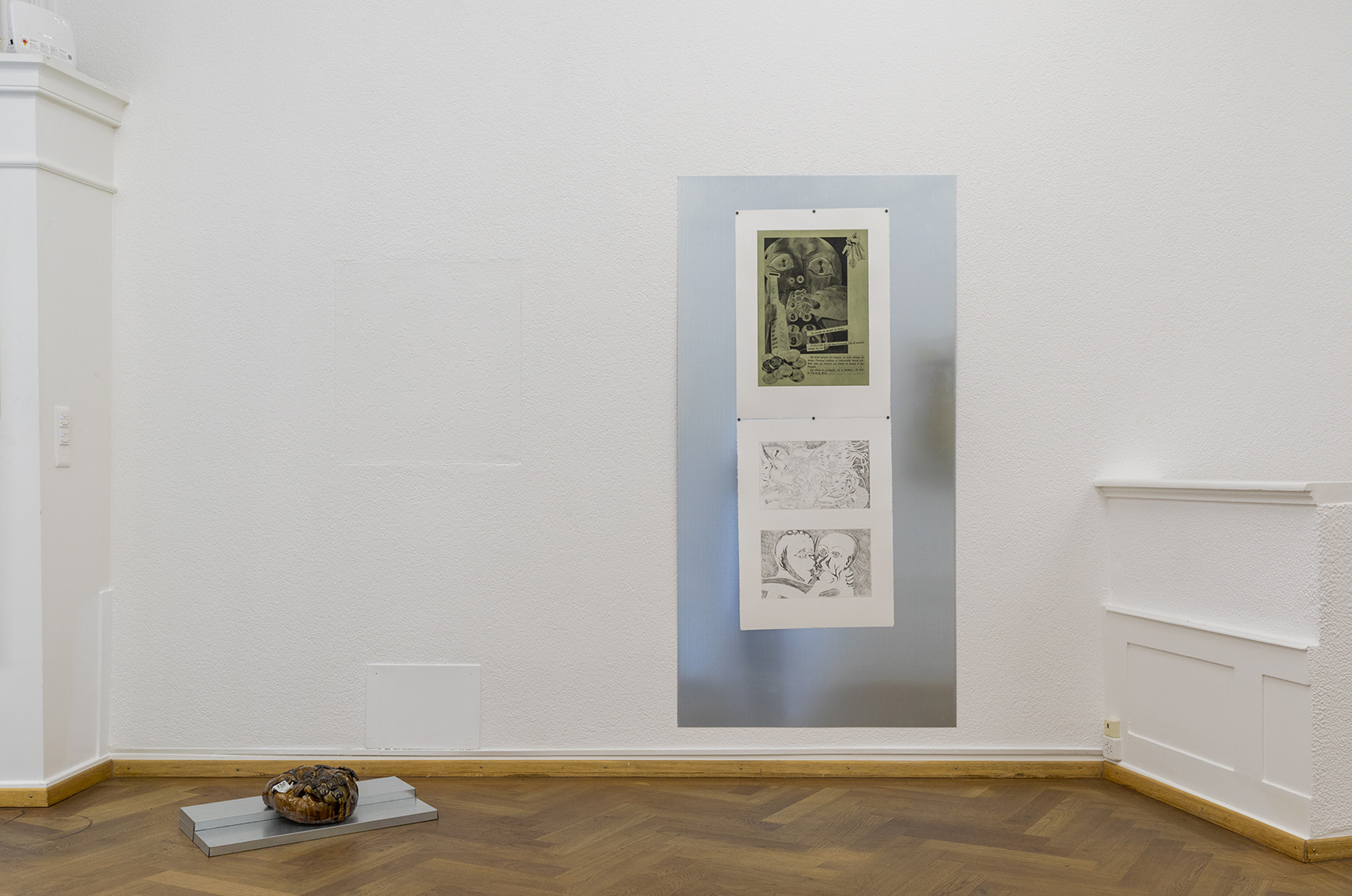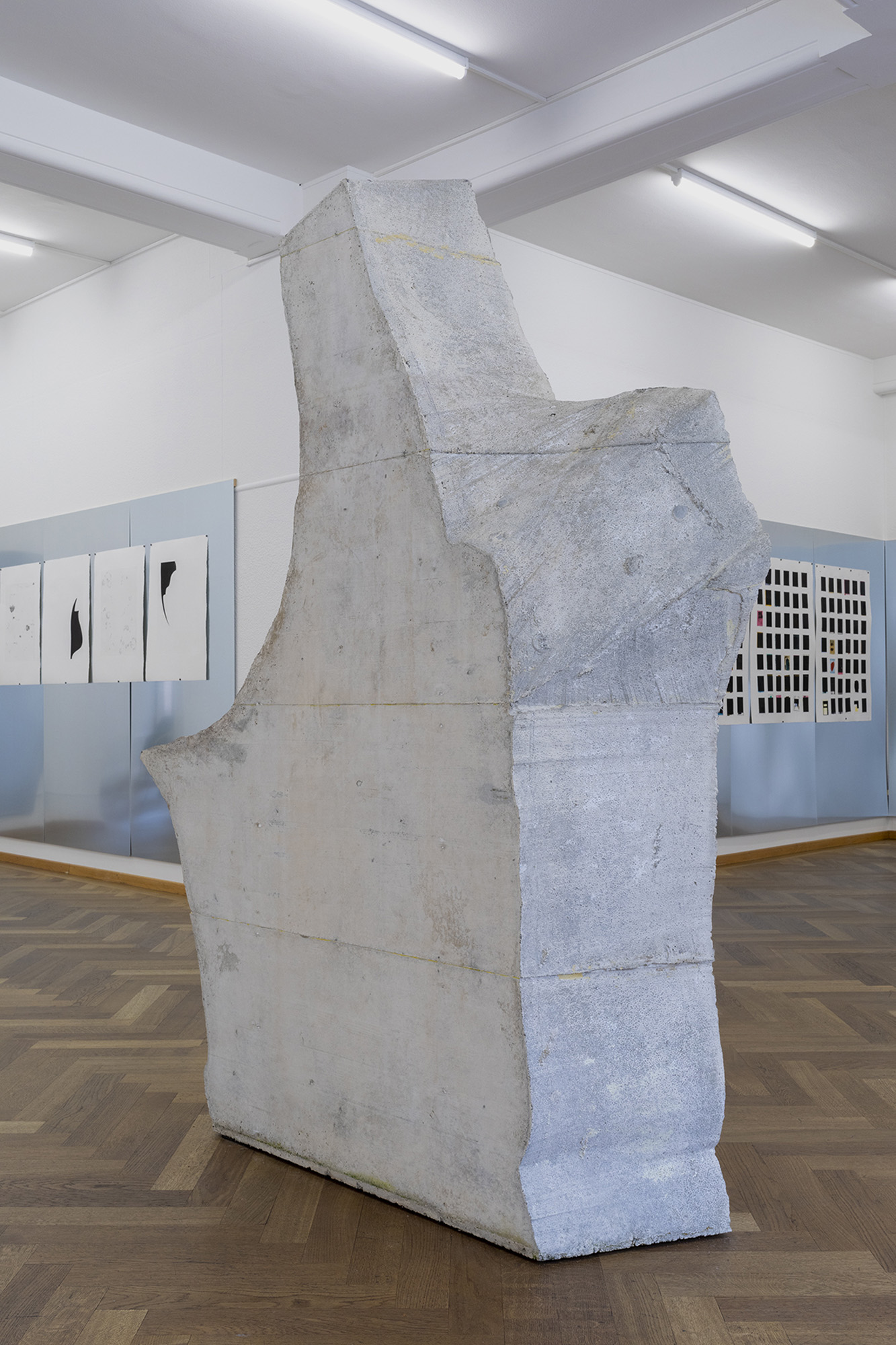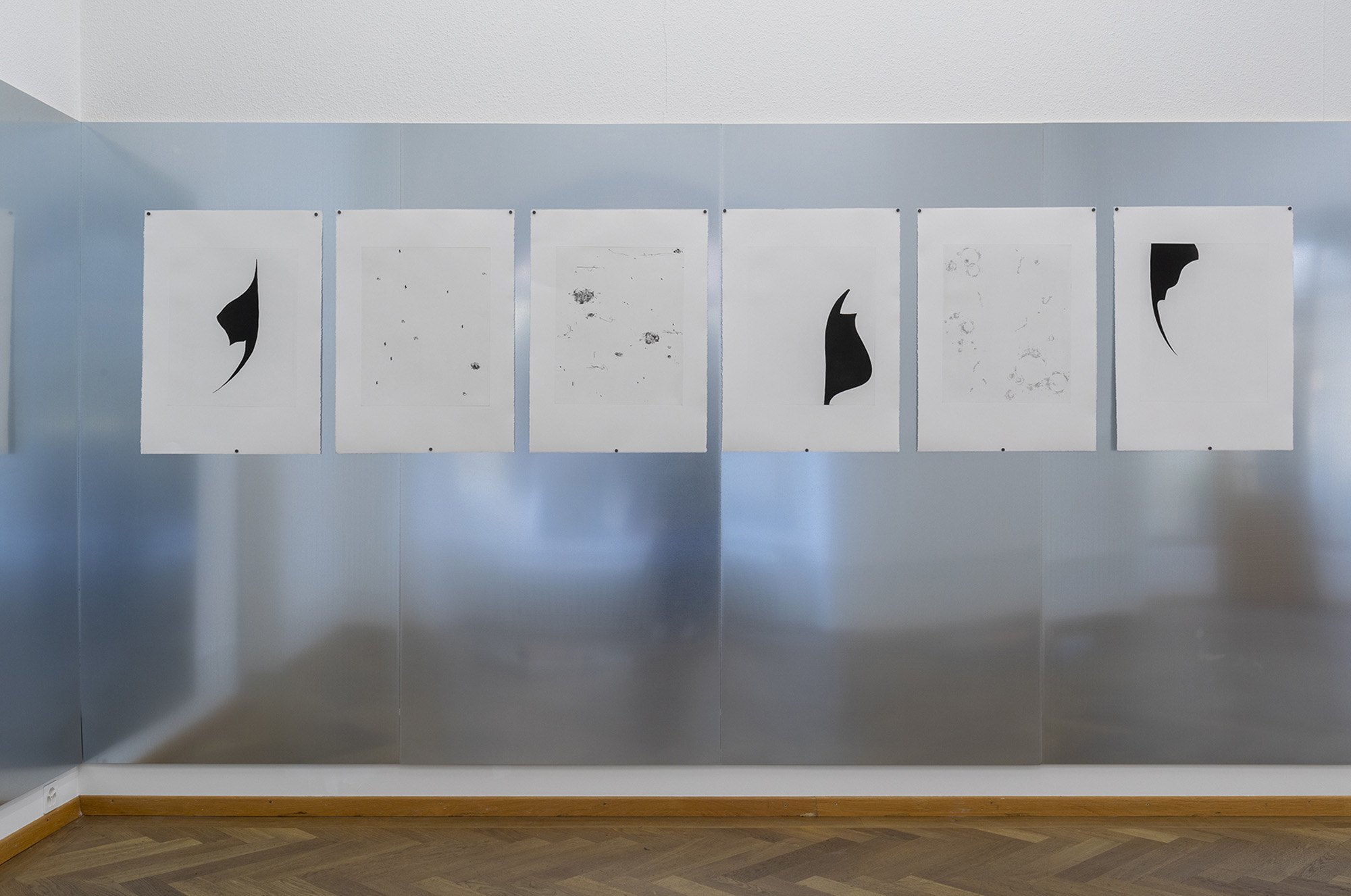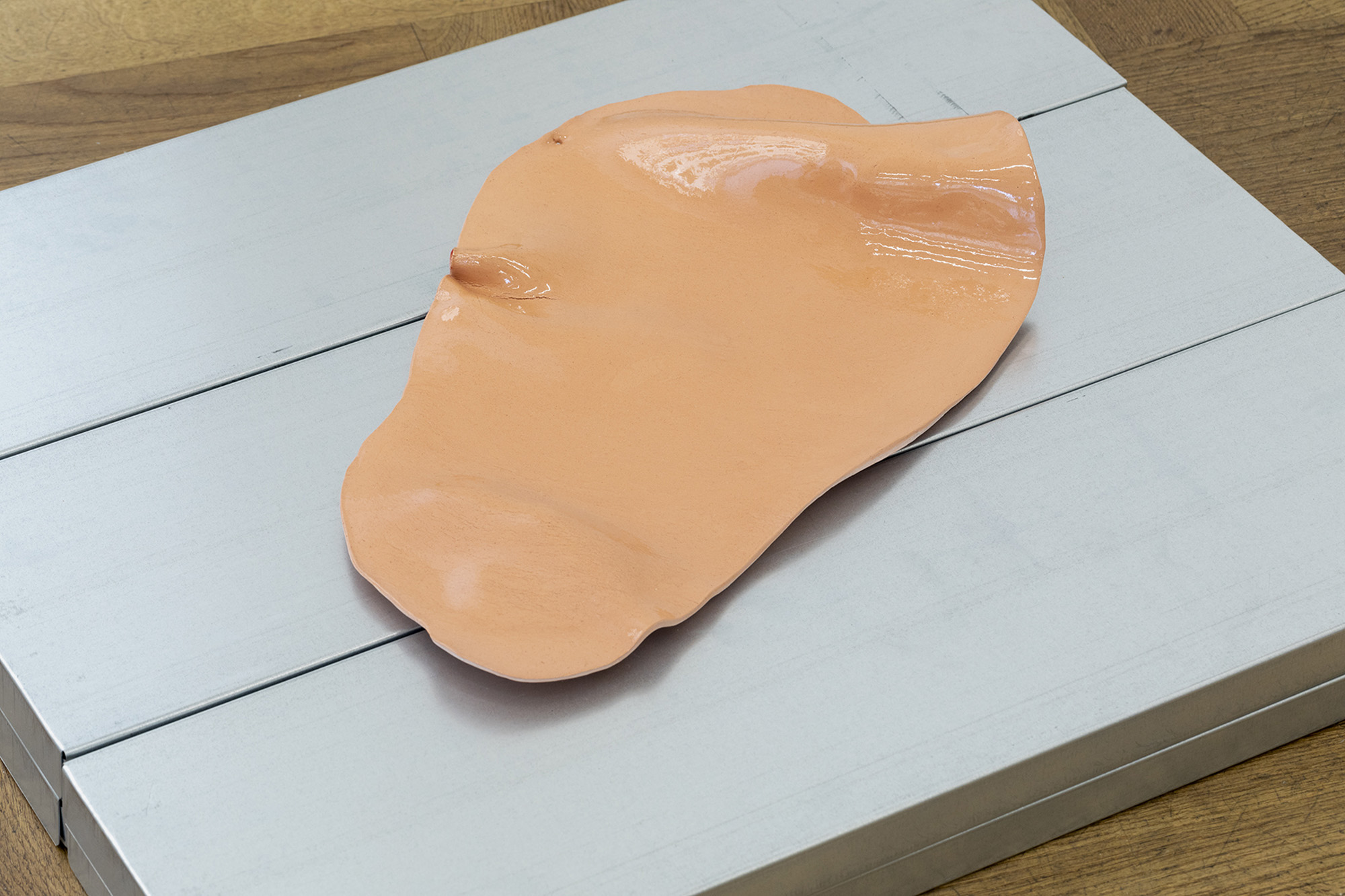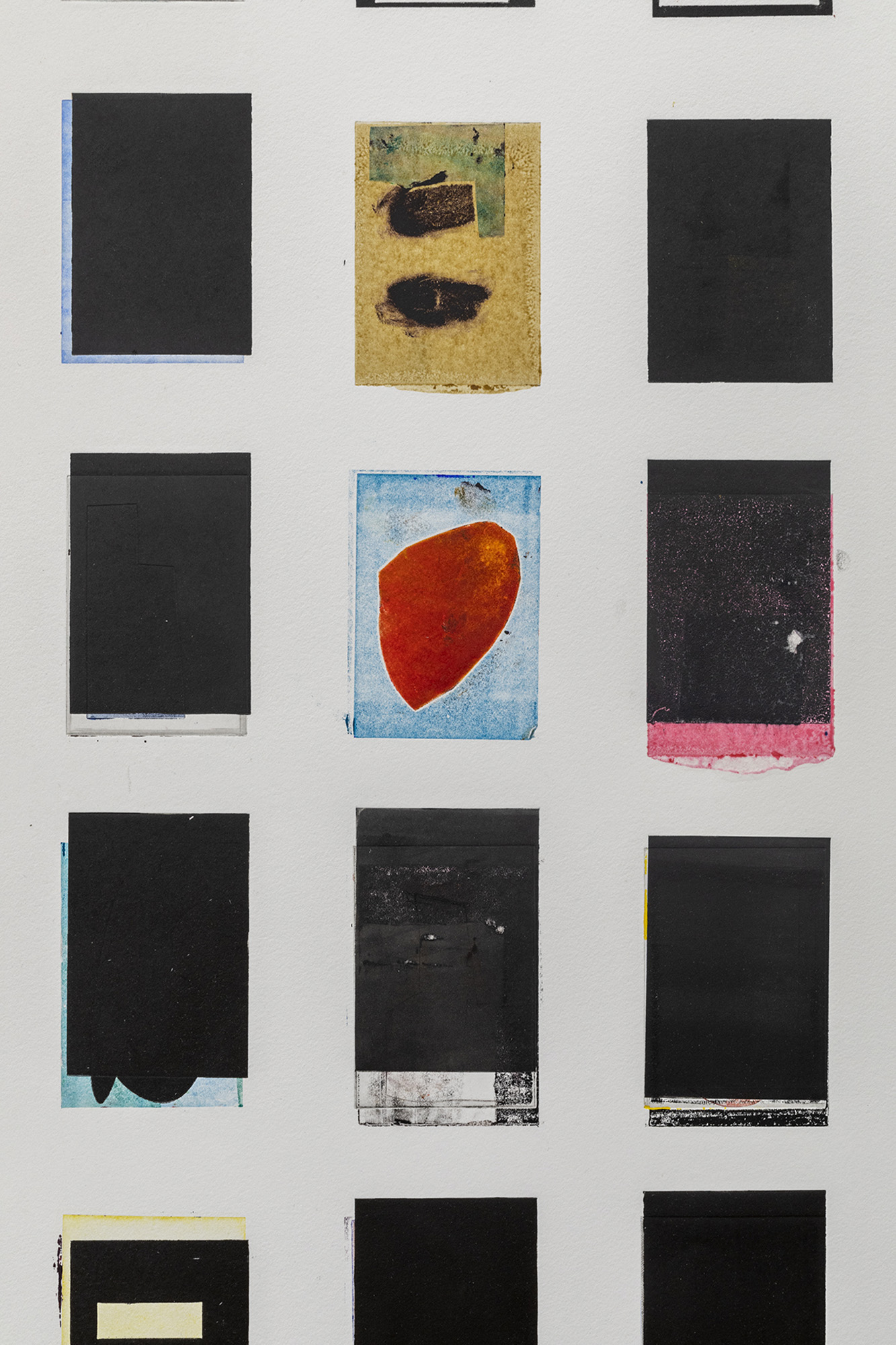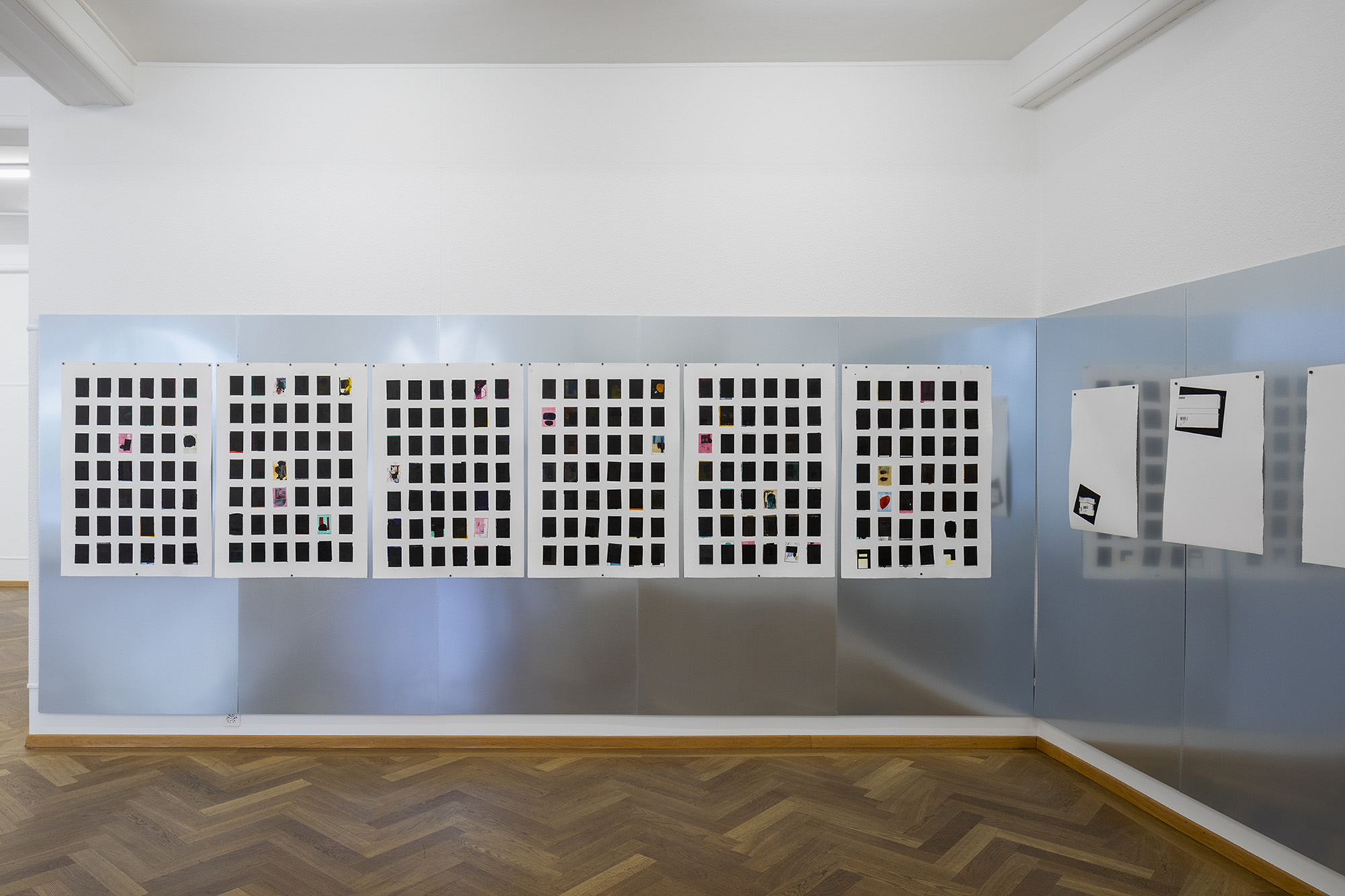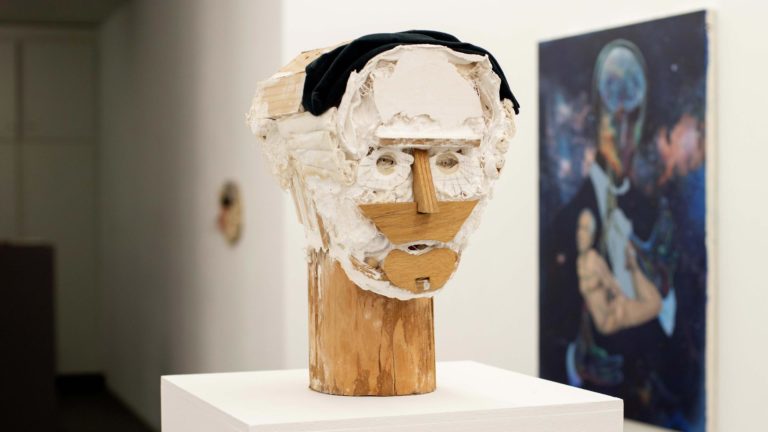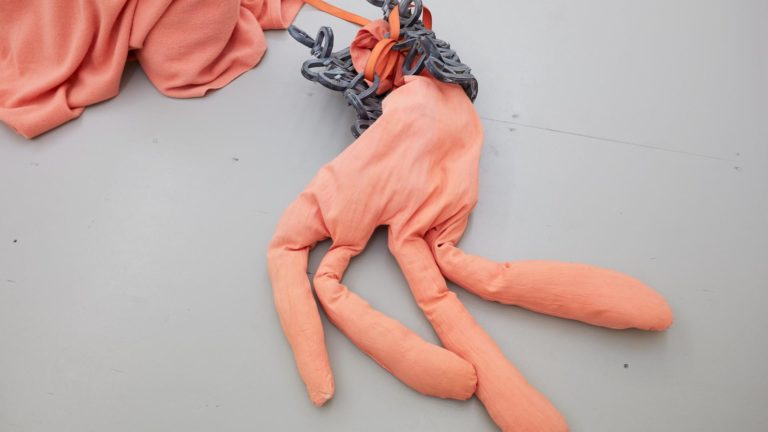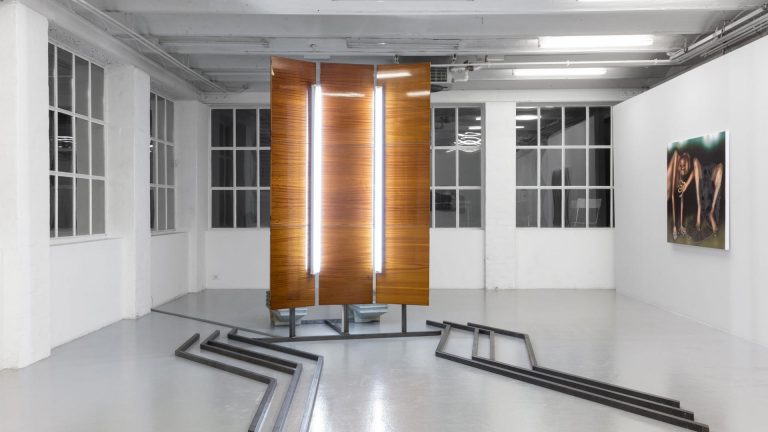Artists: Sophie Benvenuti, Linus Bill+Adrien Horni, Judith Kakon, Katrin Hotz, Izidora L. LETHE, Nicolas Polli, Gaia Vincensini
Exhibition title: Trace, Set, Print!
In collaboration with: Atelier de gravure Moutier
Venue: KRONE COURONNE, Biel/Bienne, Switzerland
Date: March 25 – April 23, 2022
Photography: © Guadelupe Ruiz / all images copyright and courtesy of the artists and KRONE COURONNE, Biel/Bienne
Printmaking is a flat medium, one that works predominantly in smaller formats and serves productions in larger editions. The serial nature of it is not inevitable but it does make sense for technical and above all economic reasons. Artists translate their ideas based on experiences from their work in other media, whether sculpture, painting, film, drawing, action or installation, in a small and serial production. This is only one possibility, as there are numerous artists who use printmaking as the main medium and see it as a primary form of expression. The artistic matrix of printmaking is transferred accordingly to other media and understood in a “media discourse”. Indeed, some of the artists in the exhibition TRACE, SET, PRINT! already engage in this media discourse. For instance, Adrien Horni and Linus Bill use screen printing in earlier works as the basis of their canvases, while Gaia Vincensini mixes etchings on both paper and metal plates within her installations – to name just a few. Working within a media discourse requires artists to understand how to translate their practice into a different medium in order for a combination to work. Translation is an activity that does not often come into focus as a process because – when done well – it remains invisible. In the exhibition TRACE, SET, PRINT! it is precisely the translation of the medium that is being addressed. The following is an attempt to address this very translation.
There are two forms of translation to distinguish. Two mutually dependent components – one conceptual and the other technical. Conceptual translation is a discursive and dialectical element that is activated by both the artist and the viewer in more than one direction. It appears as a circular form of production, shaped by artistic ideas and aesthetics, and constituted by a new printed image. At the same time, its visual translation is to be understood as a non-mimetic form of artistic representation. This is because it is based on modified narratives that take on an alternative perspective and medial form. To see print as a pure form of reproduction diminishes the added value that the different techniques of this medium have to offer. The concept of the “original” in relation to the
“reproduction” is addressed by Walter Benjamin, both in his seminal text “The Work of Art in the Age of Mechanical Reproduction” (1936), and in a lesser-known essay “The Task of the Translator” (1923). It is not about unique objects and their aura as the epitomised character, but about fully shaped original works becoming catalysts of political, ideational and aesthetic narratives. For as long as the translation and the conceptual premise do justice to the newly chosen medium in its necessity, the works are artistic originals in themselves – just
as the works in this exhibition illustrate. It is precisely here that the participating artists show that there is no such thing as “the original”, but that the printed artworks must be understood as originals in an overall work context through the comprehension of successful translations – namely as “automobile picture vehicles”. The term coined by Aby Warburg describes the transfer of images and thus their narratives through space and time. Through the possibilities of printmaking in production and reproduction, primarily haptic vehicles and artefacts are created and disseminate in society. Warburg states in 1906: “The changeable tapestry stands between high art and the art of printing, whose products have taken their place on the walls of the bourgeois home as a picture vehicle”.
While the first stage of translation is an intellectual exercise for artists, the second is a technical one. To conceive artistic ideas in various techniques of the printmaking medium, technical knowledge is required, which only a few artists have mastered to perfection. This is what studios such as the Atelier de gravure in Moutier and increasingly young workshops around the Biel/Bienne area stand for. Here printers offer spaces to accompany translations into printmaking in a professional setting and give artists the opportunity to explore new forms of production. Most artists greatly appreciate the collaborative, artisanal work. In this way the question of the added value of translating an artistic practice into printmaking is raised, especially since artists today have less opportunities to experiment with classical techniques and can usually achieve results more quickly and more economically with digital forms of production. That said, it remains that printmaking makes it possible to conceive haptic works on paper as multifaceted originals, through manual interventions, choice of materials and colors, etching and the addition of traces.
Text by David Khalat
——-
The exhibition “TRACE, SET, PRINT! On printing and (un) translating” features eight artists, who were invited to translate their artistic practices into the medium of print.
The seven new series of prints are the result of a collaboration and a form of residency between the artists and the Atelier de gravure in Moutier – one of the printing ateliers in the region of the Berner Jura in Switzerland that take pride in traditional printing techniques. Accompanied by existing works of the eight artists – giving us a glimpse into their respective practices – these series of heliogravure prints reflect on the act of “translation” as a performative and communicative tool.


